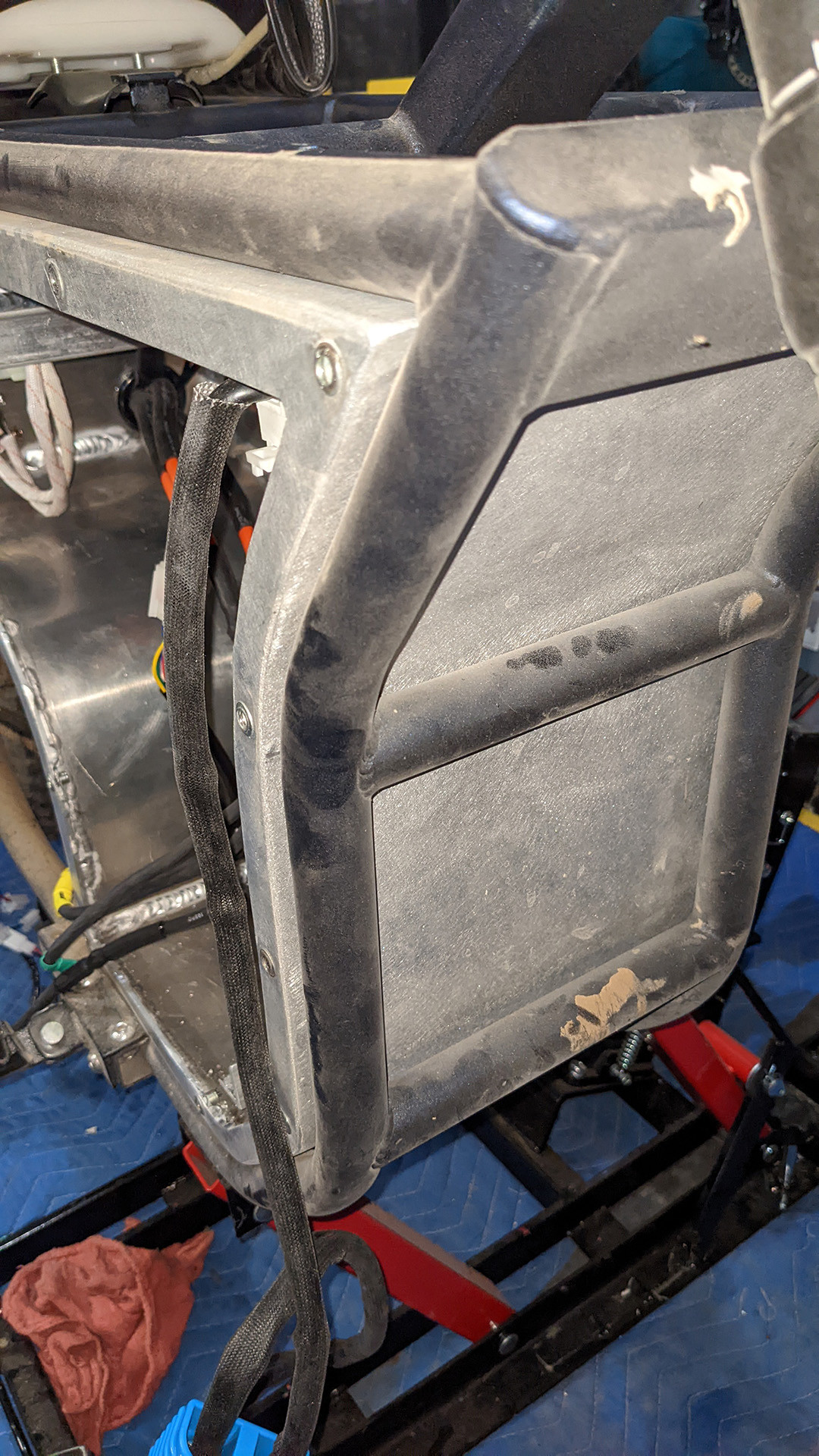I have an electric motorcycle (built two now) that I'm having an overheating issue with. This is a fully from-scratch build (minus the motor, controller and accessories), and I am learning a lot along the way.
Here's my issue: I'm having a hard time mounting the controller (the brain of the bike) right up against the front of the "electrical enclosure", which would ensure a direct contact and potential thermal transfer of heat from the controller to the aluminum shell, allowing air to cool it.
I currently have a 2 cm gap from the heat sink fins of the controller to the front of the enclosure. I do not want to mount this outside the "enclosure" because 1. aesthetics and 2. I want to keep all electronics away from water and dust – it's essentially waterproof. See pics:
Controller in its mounted position with the gap I'm trying to fill:
The heatsink of the controller:
The inside of the "enclosure":
The outside of the "enclosure":
First question: How can I fill this gap on these two builds to help with heat dissipation? A thermal sheet mounted to another heatsink and then another thermal sheet to the enclosure? What do you recommend?
Second question: On my next builds, would you recommend air cooling? Cut two vents high on the box, install a filter (for debris) and vents low down on the box, forcing air in and out, while allowing water a place to drain out. Or can I get away with keeping it sealed and using a heatsink (my preferred method)?




